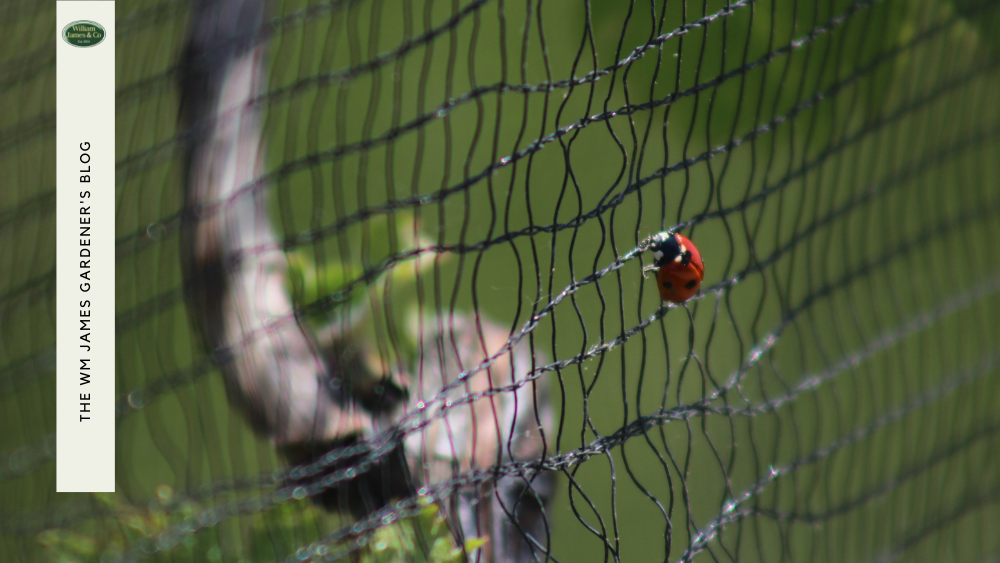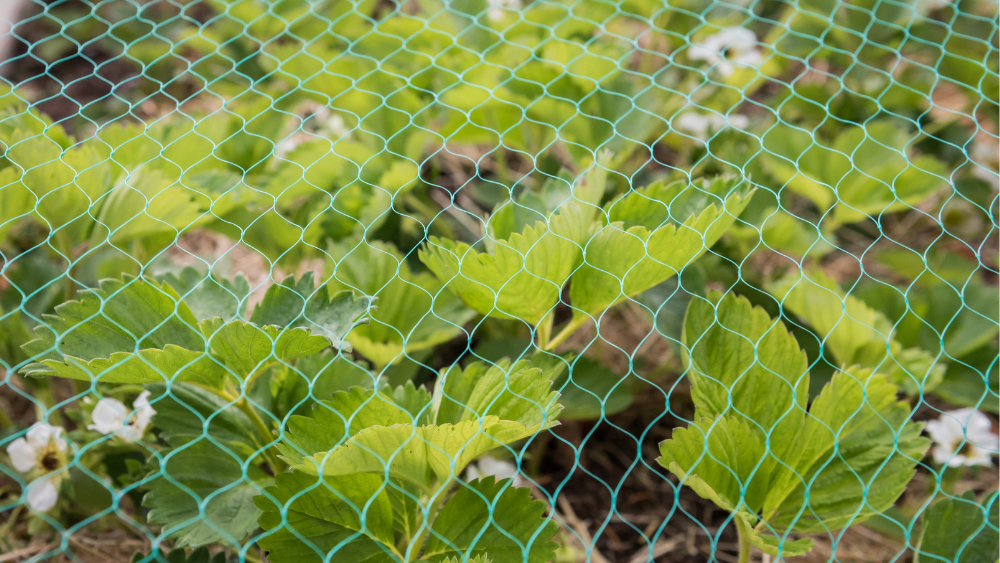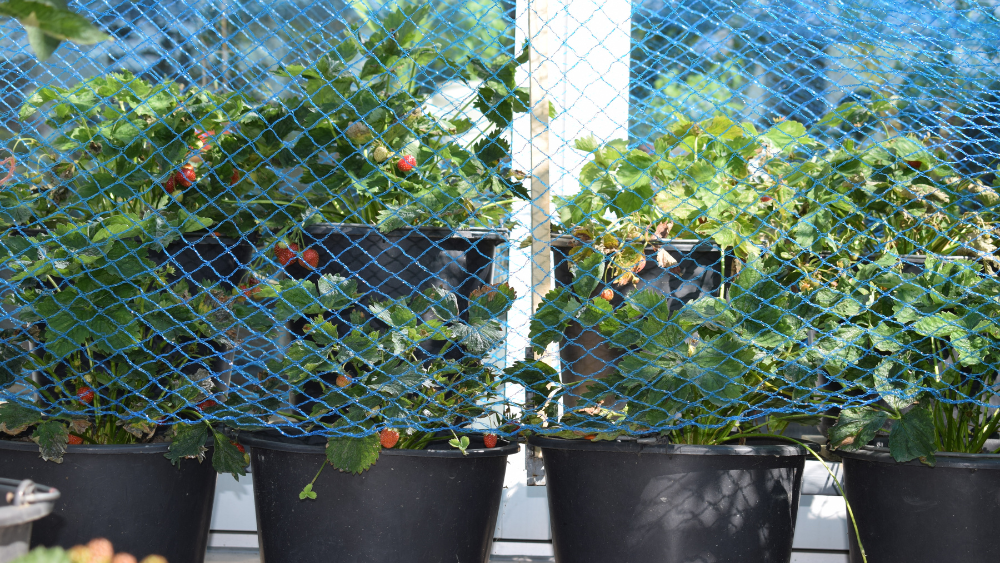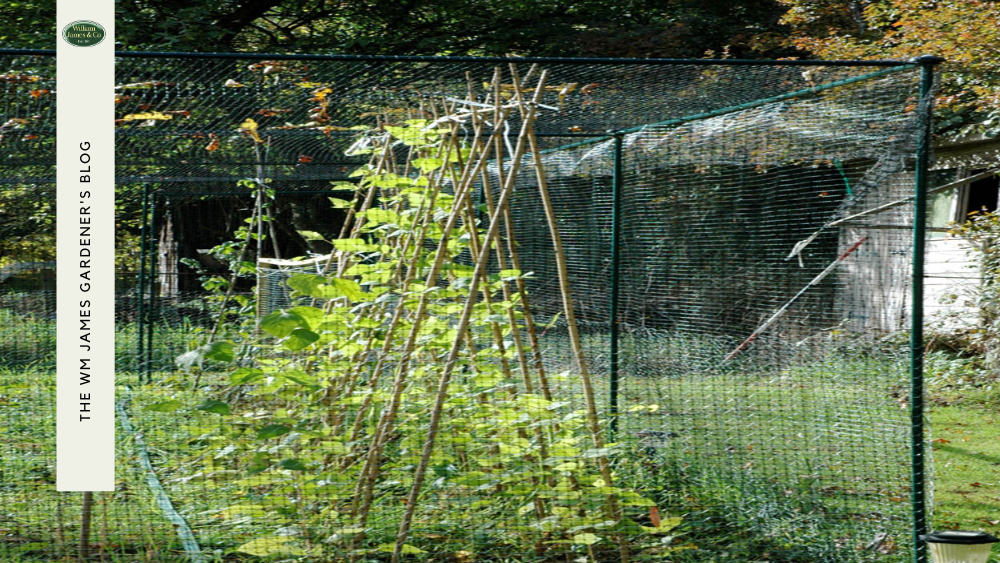We use cookies to make your experience better. To comply with the new e-Privacy directive, we need to ask for your consent to set the cookies. Learn more.
How Plant Protection Netting Can Revitalise Your Allotment
- Admin
- WM James Gardening Blog
- 29 Jun 2022
-
14views

When you're growing your own fruit and vegetables, it's important to use plant protection netting to keep them safe from pests.
Pests can ruin your crops, so using a net is the best way to protect them. Not only will this ensure that you get a good harvest, but it will also help to keep your plants healthy.
This guide demonstrates the best ways to use netting for plant protection, from choosing the material, sizes, and ways to secure netting, so it offers the best protection.
We also discuss the types of plants most susceptible to attack from pests or damage from wildlife such as birds and insects.
To get the best results, you should also consider using fruit cages or polytunnels as well as netting. This will create a barrier around your plants, so we will mention how these can be helpful to make your garden or allotment flourish.

Why Use Netting Protection
You can use many different types of netting to cover and protect your crops, and doing so has many benefits that can improve the quality and lifespan of your plants and trees.
First of all, you can use insect netting to protect your plants from harmful bugs that could lay eggs on your crops. Their larvae will then hatch and damage leaves and roots, eventually killing the plant.
You can also use certain netting, which can protect your crop plots from birds that want to eat your freshly spread grass seeds. Our heavy-duty bird netting will prevent many birds from getting to your plants, but be aware that most insects will still be able to get through.
The type of netting you choose for your garden depends on what sorts of pests are threatening your plants, and while some may prefer netting with larger gaps for more transparency, they may still require a net with smaller holes due to the insect threat.
What Crops Can Plant Netting Be Used For?
There are many types of plants that can benefit from netting, and to give you an idea as to which, we've listed a few.
Lettuce
These great vegetables are a prime target for one of the garden's most ruthless predators. The dreaded slug. While many people will use products that kill slug populations, it's only fair to think about the benefits they have for the garden.
Slugs are great composters, and while they may target your prize lettuces, they help to keep your garden fresh and verdant. In that case, a micromesh gardening tunnel is an essential choice to keep your lettuces safe without killing off these helpful garden molluscs.
Tomatoes
Your baby tomatoes are also going to need good protection, but a lot of the time, this is from birds who just love snacking on those juicy, easy-to-eat morsels. Unfortunately, due to the size of tomato plants, you will need to choose something other than standard netting.
To protect your tomatoes, you'll want to consider using a fruit cage of some kind. This will provide your tomato plants with the space to grow while also acting as the perfect barrier against aerial assault.
Beans
Your beans will also want to be inside a cage too. A larger walk-in fruit cage can be good here as beans can grow very tall. The netting, which you can use as the primary material around the fruit cage, can be varied, too, depending on what purpose it serves.
A fine mesh can be useful to place around the base of your beanstalks or even used for the entire cage if you're okay with that aesthetic, as snails and slugs pose a big threat to beans as well as other plants.
Potatoes
These can really benefit from plant netting as there are plenty of pests that love eating potatoes, such as slugs, wireworms, the potato beetle and the flea beetle, to name a few. Both of these beetles originated in North America and have become common pests across Europe through their accidental introduction.
You'll find rabbits, mice, and other small mammals beelining for those potato plants, too, if you're not careful. Planting these inside a low vegetable cage with fine mesh netting will help to limit any damage that these creatures can cause.
Radishes
While your radishes can grow quickly and easily, it will still be frustrating to see them being devoured by pests. Many people choose to grow these in small planters alongside salads, and these planters can be protected quite easily.
Simply drape a fine garden netting over the planter and secure the edges using nails or screws, for example. This will help to keep those delicious radishes much safer than if left uncovered in the ground.

Benefits of Plant Protection Netting
There are a number of benefits to using plant protection netting in your garden, and, as we've outlined above, these benefits are relevant to most of your plants.
It's worthwhile identifying the highest risks to your crops and acting as soon as possible with the relevant plant protection netting to ensure your garden plants remain as healthy as possible.
- Keeps crop-eating insects from eating leaves and roots
- Prevents birds from eating fruit before you harvest
- Garden fleece protects plants and trees from frost
It's generally agreed among gardeners that it's unwise to dismiss the usage of plant protection netting. Most gardens are prone to be inhabited by pests of some kind, and this netting can reduce their impact.
How To Secure Plant Netting
Securing your plant netting is fairly straightforward. First, it depends on where your plant netting will be used. If it's being applied over the top of a raised bed, you can easily nail or staple the netting to the wooden bed.
If it's being wrapped around a tree, then some garden string can help you tie the netting around the trunk to close any gaps. If you're using a cage or tunnel, then you'll be able to tie the netting to the frame using string or even cable ties.
Checking & Repairing Plant Protection Netting
It's recommended that you check your plant protection netting regularly to search for any holes or tears in the net itself. These can be patched up using string by tying the holes together as though you were sewing the netting.
In some cases, nets can get damaged beyond repair, or the holes you patch up might deform the netting too much, leaving gaps elsewhere. In that case, you will have to replace the netting. Most garden netting can be recycled, too, so check this before throwing it away.
Crop Protection Alternatives
We've touched on these a bit, but there are a couple of alternatives for plant protection netting that is freely laid across plots or tied around individual plants.
Fruit Cages
A fruit cage removes the need for you to protect single plants as it essentially protects an entire area from pests. Using a sturdy metal or wooden frame system, you will suspend plant protection netting across the frame itself, creating a secure outdoor room for your plants.
The materials used in these cages can vary, and you can use different types of netting to handle different sizes of pests. A fine mesh will stop smaller critters like insects, and netting with larger holes is great if it's only birds and mammals that you're concerned about.
There are many different sizes of cages too. You can find everything from walk-in fruit cages to smaller vegetable cages which don't take up as much vertical space.
Polytunnels
These tunnels offer limited protection from pests unless it's a tunnel with closable ends, but they do offer significant protection from the elements.
Not only do these protect crops from the occasional snap frost, but they also allow gardeners to start planting earlier than planned by keeping the soil warmer too.
Final Thoughts
There are many ways in which you can protect your plants, and it's important to consider this when working on your garden. No matter where you're situated, there are countless types of pests that can simply irritate you as a gardener or cause significant devastation throughout your garden.
While it may add a few more tasks to your list, keeping your crops and trees safe from pests and bad weather is going to save you much more time than if you had to remove and replant all of your dead crops.
FAQs
How do I measure plant protection netting?
To measure the netting, you will need to take into account the height, width, and length of the area you are trying to cover. You can then simply cut down using scissors or a knife to the required size.
Can I reuse plant protection netting?
Yes, you can reuse plant protection provided there are no holes or general damage. Be sure to check for any damage before reusing.
How often should I check my plant protection netting?
It is generally a good idea to check your netting every few weeks to make sure there is no damage. Holes or tears can quickly let pests and animals through, so it is important to keep an eye out.
What is the best material for plant protection netting?
The most common type of netting is made from polyethene, which is a durable and long-lasting material. It is also UV stabilised, meaning it won't break down in the sun.
Does plant protection netting protect plants from frost?
No, plant protection netting will not protect plants from frost. For this, you will need to use a different type of material, such as frost cloth.











